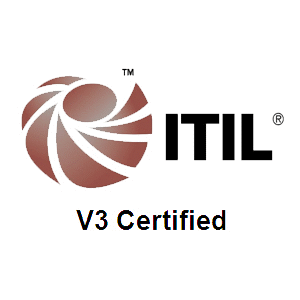Cloud computing is essential for modern development, data storage, and scalable applications. Setting up your first cloud environment is a valuable skill, and you can begin without spending any money. This guide explains how to create a free cloud environment using the top three providers: Amazon Web Services (AWS), Google Cloud Platform (GCP), and Microsoft Azure. It also includes details about free credits and student programs.
✅ Step 1: Select a Cloud Provider That Offers a Free Tier
Cloud providers offer free tiers to help new users explore their platforms. These free tiers include limited access to virtual machines, storage, and databases.
☁️ Amazon Web Services (AWS)
🔹 AWS Free Tier
AWS provides a free tier that lasts for 12 months. It includes 750 hours per month of EC2 compute time, 5 GB of S3 storage, and 750 hours of RDS database usage. Some services remain free forever with usage limits.
🔹 AWS Educate
AWS Educate is designed for students and educators. It offers free credits, cloud labs, and learning resources. Students aged 13 and above can join without a credit card.
🔹 AWS Activate
AWS Activate supports startups. It provides up to $100,000 in credits, technical support, and training. Startups can apply through the Activate Founders or Activate Portfolio programs.
🔹 AWS Cloud Credits for Research
Academic researchers can apply for AWS credits to support cloud-based research. A proposal and institutional affiliation are required.
☁️ Google Cloud Platform (GCP)
🔹 GCP Free Tier
GCP offers a $300 credit valid for 90 days. It also provides always-free services, including one f1-micro VM, 5 GB of Cloud Storage, and access to Firebase and Cloud Functions.
🔹 Google Cloud for Students
Students can access free credits through their institutions. Faculty members apply for credits and distribute them to students. Students receive $50–$100 in credits and access to Qwiklabs for hands-on learning.
🔹 Google Cloud Research Credits
Researchers and faculty members can apply for credits to support academic projects. A project proposal and institutional verification are required.
☁️ Microsoft Azure
🔹 Azure Free Tier
Azure offers a 12-month free tier. It includes 750 hours per month of B1S virtual machines, 5 GB of Blob Storage, and 250 GB of SQL Database. Some services remain free indefinitely.
🔹 Azure for Students
Azure for Students provides $100 in credits. No credit card is required. Students must verify their academic status using a school or university email. The credits are renewable annually.
🔹 Azure for Educators
Faculty and institutions can access $200 in credits for 30 days. They also receive access to Azure Dev Tools for Teaching.
✅ Step 2: Create a Free Account
Visit the official website of the cloud provider. Click the option to create a free account. Enter your email address and create a secure password. Verify your identity using a phone number and a credit or debit card. Accept the terms and complete the registration process.
✅ Step 3: Access the Cloud Console
After registration, log in to the cloud console. The console is a web-based dashboard that allows you to manage your cloud resources.
- AWS Console: https://console.aws.amazon.com
- GCP Console: https://console.cloud.google.com
- Azure Portal: https://portal.azure.com
✅ Step 4: Launch a Virtual Machine (VM)
Each provider allows you to create a virtual machine using free-tier resources.
Example: Launching a VM on AWS
- Open the EC2 Dashboard.
- Click “Launch Instance.”
- Select Amazon Linux 2023 (Free Tier Eligible).
- Choose the t2.micro instance type.
- Configure instance details and storage.
- Create a key pair for SSH access.
- Launch the instance.
✅ Step 5: Connect to the Virtual Machine
Use SSH to connect to your VM.
On Windows
Use PuTTY or Windows Terminal.
Example command:
ssh -i your-key.pem ec2-user@your-public-ip
On Linux/macOS
Use the terminal.
Example command:
chmod 400 your-key.pem
ssh -i your-key.pem ec2-user@your-public-ip
✅ Step 6: Explore Additional Free Services
Each provider offers additional services within the free tier. These include object storage, serverless functions, and managed databases. You can use these services to build and test applications.
✅ Step 7: Monitor Usage and Avoid Charges
Set up billing alerts in your cloud dashboard. Use cost calculators to estimate usage. Shut down or delete unused resources to avoid unexpected charges.
🎯 Final Thoughts
Creating your first cloud environment is a practical step toward mastering cloud computing. AWS, GCP, and Azure offer generous free tiers and student programs. These resources allow you to learn, build, and experiment without financial risk.

